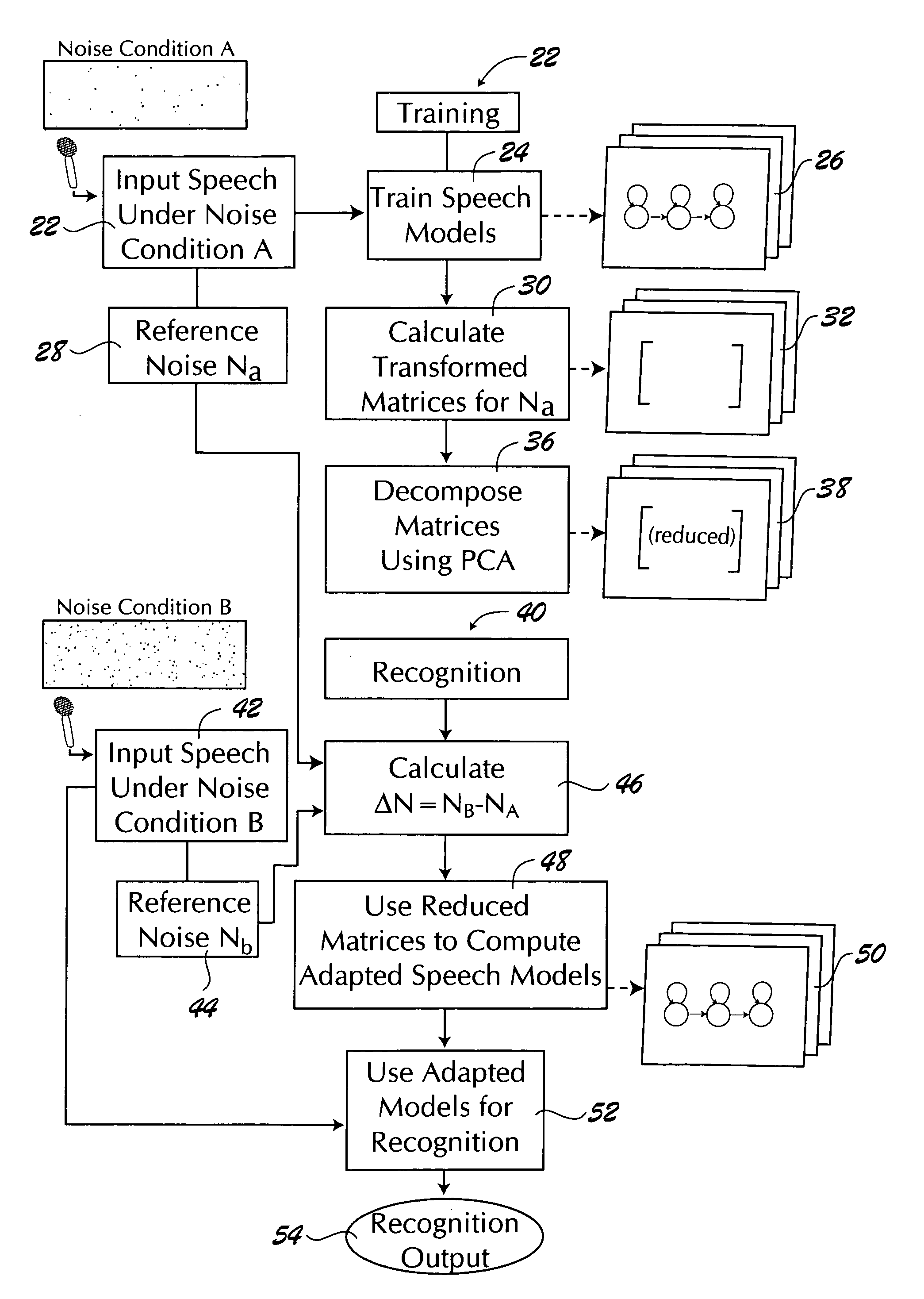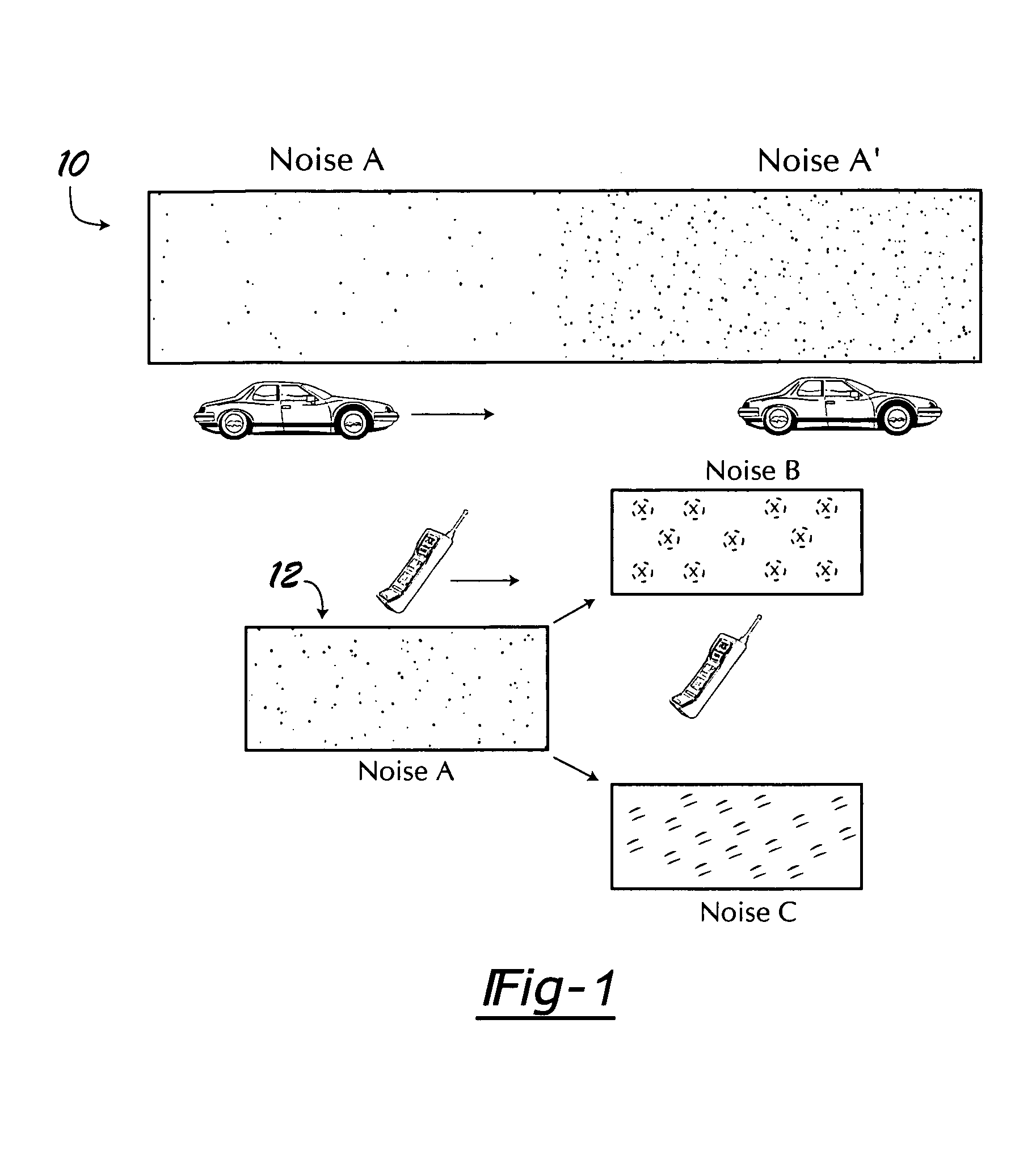Method and apparatus for feature domain joint channel and additive noise compensation
a feature domain and noise compensation technology, applied in the field of automatic speech recognition systems, can solve the problems of inability to fully realize the speech signal, the speech signal is corrupted, so as to achieve more robustness and less memory
- Summary
- Abstract
- Description
- Claims
- Application Information
AI Technical Summary
Benefits of technology
Problems solved by technology
Method used
Image
Examples
Embodiment Construction
[0021]The following description of the preferred embodiment(s) is merely exemplary in nature and is in no way intended to limit the invention, its application, or uses.
[0022]At least one configuration of the present invention is applicable to the problem diagrammatically illustrated in FIG. 1. As shown in 10, assume, for example, that the automatic speech recognition system must work with a noisy environment, such as within a passenger compartment of a moving vehicle. The noise level measured within the passenger compartment typically increases from noise A to noise A′ as the vehicle speeds up. Although the noise level may increase from A to A′, the character or quality of the noise remains largely the same. In a moving vehicle, for example, the noise spectrum typically changes in a predictable way as the vehicle speeds up. Wind noise increases in amplitude, but retains its largely random white noise or pink noise character. Road surface noise (the sound of the tires rolling upon th...
PUM
 Login to View More
Login to View More Abstract
Description
Claims
Application Information
 Login to View More
Login to View More - R&D
- Intellectual Property
- Life Sciences
- Materials
- Tech Scout
- Unparalleled Data Quality
- Higher Quality Content
- 60% Fewer Hallucinations
Browse by: Latest US Patents, China's latest patents, Technical Efficacy Thesaurus, Application Domain, Technology Topic, Popular Technical Reports.
© 2025 PatSnap. All rights reserved.Legal|Privacy policy|Modern Slavery Act Transparency Statement|Sitemap|About US| Contact US: help@patsnap.com



